10 keys to following the Paleo Diet
From fueling with protein to avoiding whole grains, here's the scoop on this popular eating plan.
Updated on May 13, 2025
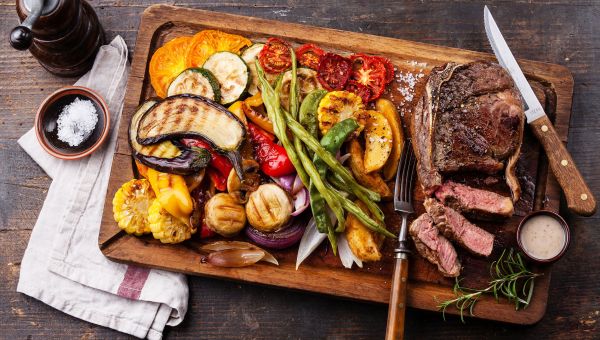
New diet trends seem to surface daily, but the Paleo Diet has had serious staying power since the book of the same name came out in the early 2000s. Colorado State University professor Loren Cordain, PhD, wrote the book after being introduced to the concept of prehistoric diets in the 1980s. The eating plan advocates for high-fat, protein-rich, and veggie-heavy meals,… Show More
New diet trends seem to surface daily, but the Paleo Diet has had serious staying power since the book of the same name came out in the early 2000s. Colorado State University professor Loren Cordain, PhD, wrote the book after being introduced to the concept of prehistoric diets in the 1980s. The eating plan advocates for high-fat, protein-rich, and veggie-heavy meals, reasoning that those were the types of foods people would have hunted, scavenged, and eaten in the Paleolithic era.
On the diet, you’re encouraged to eat lean meats, healthy fats, and most fruits and vegetables. But grains, dairy, beans, and processed foods are off-limits.
Proponents of Paleo claim the diet benefits digestion, helps control glucose and blood pressure levels, decreases inflammation, and may even help with weight loss. Critics suggest the diet is too restrictive to sustain long-term, and that following it could lead to nutritional deficiencies.
Here’s what to know about Paleo, whether it lives up to the hype, and what to eat and avoid if you give it a try.
Show Less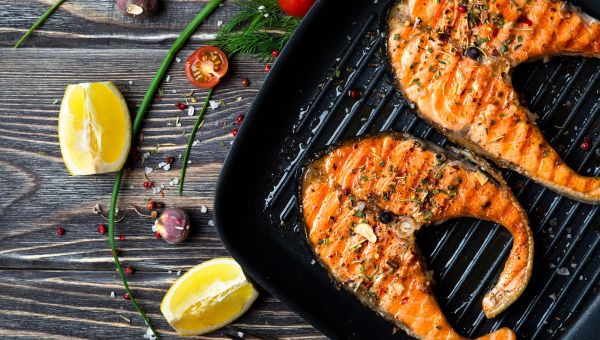
You can fill up on meats—the leaner the better
The diet of Paleolithic-era hunter-gatherers was largely carnivorous. The Paleo Diet website says that between 19 and 35 percent of the diet consisted of protein, compared to roughly 15 percent protein in the typical Western diet. The Paleo Diet also claims that increased protein in your diet helps… Show More
The diet of Paleolithic-era hunter-gatherers was largely carnivorous. The Paleo Diet website says that between 19 and 35 percent of the diet consisted of protein, compared to roughly 15 percent protein in the typical Western diet. The Paleo Diet also claims that increased protein in your diet helps lower blood pressure, improves arterial stiffness, and can boost weight loss.
Protein sources emphasized by the diet include chicken, turkey, beef, eggs, and fish. While one’s specific protein needs vary by age, sex, and activity level, as a general rule, the National Academy of Medicine recommends that adults eat about 7 grams of protein each day for every 20 pounds of body weight. The Paleo Diet encourages followers to eat protein every day but doesn’t specify how much.
Show Less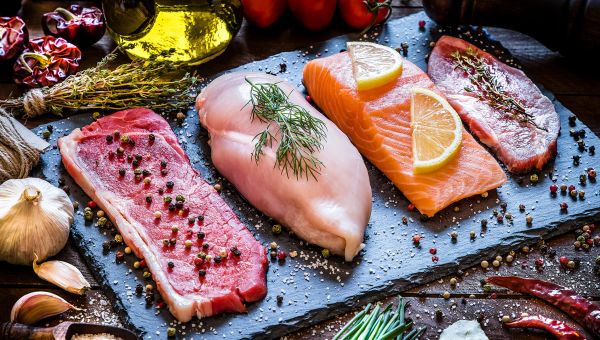
The type of animal protein matters
Although protein is an excellent energy source, animal proteins like beef, pork, and lamb contain substantial amounts of saturated fat. Research suggests that eating too much animal protein can raise one’s levels of LDL (aka “bad” cholesterol) and increase risk of heart disease. The American Heart… Show More
Although protein is an excellent energy source, animal proteins like beef, pork, and lamb contain substantial amounts of saturated fat. Research suggests that eating too much animal protein can raise one’s levels of LDL (aka “bad” cholesterol) and increase risk of heart disease. The American Heart Association (AHA) recommends limiting your daily intake of saturated fats to just about 13 grams for a 2,000-calorie diet.
Paleo adherents dispute claims—even those backed by science—that saturated fats can contribute to an elevated risk of cardiovascular disease. They also argue that how the animals were raised and fed makes a difference, recommending free-range and grass-fed meats whenever possible because these animals tend to be more nutritious than modern feedlot animals.
When delving into the Paleo Diet, it’s also important to recognize that not all animal proteins are created equal when it comes to saturated fat. A 5-ounce beef burger has 8 grams of saturated fat, compared to a 5-ounce serving of salmon, which has about 2 grams.
Also keep in mind that eating too much animal protein can mean excess calories, and grilling animal meats and using other forms of high-temperature cooking can create carcinogens. Eating more than around 18 ounces of red meat per week (and any amount of processed meat) may increase cancer risk, according to the American Society of Clinical Oncology.
Show Less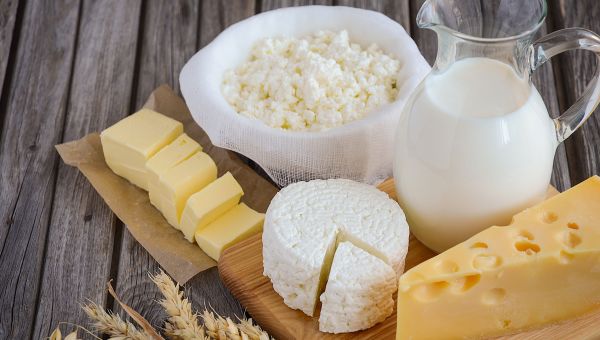
You’ll have to ditch dairy, but be aware of deficiencies
If you go Paleo, you’ll have to cut cheese, yogurt, and milk from your diet. Dairy products became widespread after farming emerged in human civilization, and therefore weren’t a staple in Paleolithic times. The Paleo Diet claims that dairy products promote inflammation, triggering conditions like… Show More
If you go Paleo, you’ll have to cut cheese, yogurt, and milk from your diet. Dairy products became widespread after farming emerged in human civilization, and therefore weren’t a staple in Paleolithic times. The Paleo Diet claims that dairy products promote inflammation, triggering conditions like autoimmune diseases, including rheumatoid arthritis, as well as increasing the risk of heart disease. (The connection is unclear, however, and more research is needed to draw conclusions.) Paleo proponents also claim that dairy is difficult for many people to digest.
In fact, dairy products are rich sources of calcium, and fortified dairy products are also rich in vitamin D, a nutrient that’s hard to get from foods. Both nutrients are essential for building and maintaining strong bones, as well as healthy immune and nervous systems. Although the Paleo Diet claims you’ll get enough calcium from non-dairy foods, dieters who skip dairy might be at risk for nutritional deficiencies, especially calcium and vitamin D, says Jessica Crandall, a registered dietitian and CEO of Vital RD, a nutrition services company.
If you do choose to skip dairy, try to make up for it by eating other sources of calcium and vitamin D, such as sardines, salmon, eggs, and foods fortified with vitamin D, like orange juice and breakfast cereals.
Show Less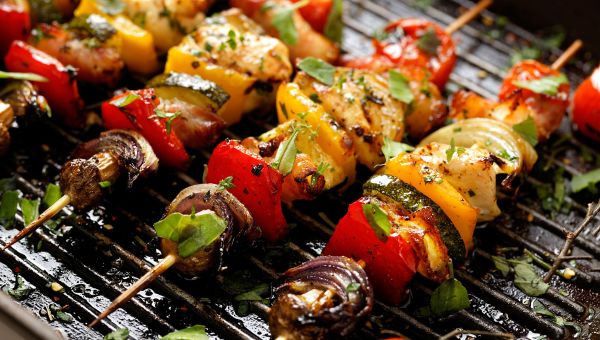
You’ll pile veggies high, but need to skip corn and potatoes
The recommendation to eat lots of veggies is one of the healthiest components of the Paleo eating plan. Veggies are low in calories, help fill you up, and are loaded with nutrients like fiber, folate, and vitamins A and C.
The caveat: They have to be Paleo-approved veggies. Luckily, most are okay,… Show More
The recommendation to eat lots of veggies is one of the healthiest components of the Paleo eating plan. Veggies are low in calories, help fill you up, and are loaded with nutrients like fiber, folate, and vitamins A and C.
The caveat: They have to be Paleo-approved veggies. Luckily, most are okay, especially non-starchy veggies like broccoli, cauliflower, asparagus, and Brussels sprouts. Although potatoes and corn are off-limits on Paleo, moderate intake of these foods is linked to overall good health (except for French fries and other fried or cheesy potato dishes).
Despite the Paleo stamp of approval, it’s worth noting that not all of these veggies existed in Paleolithic times. Which did? Leafy plants, mushrooms, and purple carrots, among others.
Show Less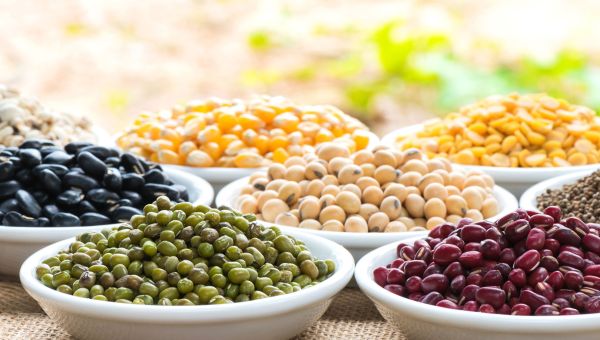
Say goodbye to fiber-packed legumes
One group of plant foods that’s off limits? Legumes. That means no beans, peas, lentils, or even peanuts. Legumes weren’t a staple of the hunter-gatherer diet and, according to the Paleo Diet, should be avoided today, too.
Despite being low in fat and cholesterol and high in nutrients, legumes are… Show More
One group of plant foods that’s off limits? Legumes. That means no beans, peas, lentils, or even peanuts. Legumes weren’t a staple of the hunter-gatherer diet and, according to the Paleo Diet, should be avoided today, too.
Despite being low in fat and cholesterol and high in nutrients, legumes are considered too carb-heavy to be eaten on the Paleo Diet. Another reason Paleo followers skip legumes: They claim they’re tough on digestion and some types in their raw form can be toxic.
The fact is, legumes are filled with fiber, protein, and potassium. They also promote heart health. Although these nutrient-dense foods aren’t Paleo-friendly, they are part of an otherwise healthy diet.
Show Less
Your fruit intake depends on your goal
Whether or not you can eat certain fruits on Paleo depends on your diet goal. Dieters doing Paleo to lose weight tend to focus on eating lower-sugar fruits like berries, grapefruit, honeydew melon, and oranges, while limiting fruit deemed to be high in sugar, such as grapes, bananas, mangos, apples,… Show More
Whether or not you can eat certain fruits on Paleo depends on your diet goal. Dieters doing Paleo to lose weight tend to focus on eating lower-sugar fruits like berries, grapefruit, honeydew melon, and oranges, while limiting fruit deemed to be high in sugar, such as grapes, bananas, mangos, apples, and pineapples. The jury is still out, however, on whether focusing on low-sugar fruits is actually effective for weight loss.
Other low-carb diets, like Atkins and South Beach, also restrict certain fruits for a period of time because they’re usually high in carbohydrates. In general, though, fruits are part of a well-balanced diet.
Show Less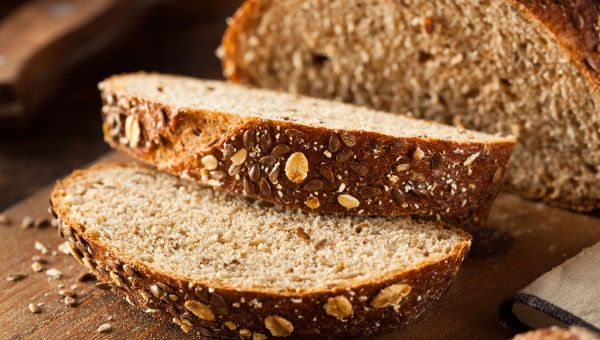
Avoid grains, but be sure to get enough fiber
The Paleo premise rests on the idea that fruits and vegetables are healthier sources of fiber than grains like rice, quinoa, and barley. What’s more, Paleo argues that grains may contribute to inflammation and that they are nutrient-poor compared to other fiber sources like produce.
No doubt, fiber… Show More
The Paleo premise rests on the idea that fruits and vegetables are healthier sources of fiber than grains like rice, quinoa, and barley. What’s more, Paleo argues that grains may contribute to inflammation and that they are nutrient-poor compared to other fiber sources like produce.
No doubt, fiber is crucial to any healthy diet. Fruits and veggies can deliver good amounts of fiber, but whole grain foods are comparable. What’s more, research indicates that whole grains are anti-inflammatory and nutrient-rich, and can help keep your digestive system running well, reduce cholesterol levels, aid in weight loss, and keep you feeling fuller, longer.
Supporters of the Paleo Diet disagree on whether to eat some grains. Strict adherents avoid all grains, all the time, whereas dieters who permit themselves “open meals” may have limited amounts of grain-based foods.
Show Less
You’ll nosh on nuts and seeds
Heart-healthy nuts like cashews, almonds, and seeds are encouraged for anyone on the Paleo Diet. Peanuts, members of the legume family, however, are off-limits.
Although nuts and seeds are rich in healthy fats, fiber, and protein, they’re also calorie-dense, so it’s important not to overdo it. A… Show More
Heart-healthy nuts like cashews, almonds, and seeds are encouraged for anyone on the Paleo Diet. Peanuts, members of the legume family, however, are off-limits.
Although nuts and seeds are rich in healthy fats, fiber, and protein, they’re also calorie-dense, so it’s important not to overdo it. A good guideline is to aim to eat four to six servings, of 1.5-ounces each, of your favorite unsalted nuts or seeds per week.
Try sprinkling crushed walnuts into your lunchtime salad, or, when afternoon hunger strikes, pair a handful of almonds with an apple. Opt for raw and unsalted snacks as much as possible, like walnuts, pine nuts, sesame seeds, and macadamia nuts.
Show Less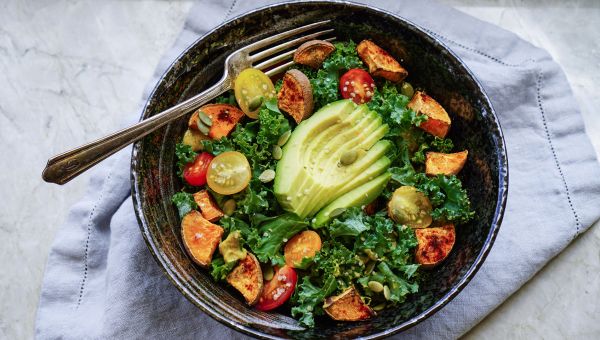
You'll fuel up on certain fats
The Paleo Diet is reliant on fats, which can be part of a well-balanced diet. Fats help keep you satiated and help regulate blood sugar levels. But not all fats are created equal.
Eating animal products like beef and pork are approved on the Paleo Diet. But those products—along with butter, also… Show More
The Paleo Diet is reliant on fats, which can be part of a well-balanced diet. Fats help keep you satiated and help regulate blood sugar levels. But not all fats are created equal.
Eating animal products like beef and pork are approved on the Paleo Diet. But those products—along with butter, also Paleo-approved—are full of saturated fat. Eating excessive amounts of saturated fat can contribute to an increased risk of heart disease. The AHA recommends limiting saturated fat consumption to between 5 and 6 percent of your total daily calories.
Another type of fat that’s Paleo-friendly is unsaturated fat, which is found in olive oil and avocados. These good fats can help lower LDL (“bad” cholesterol) levels and decrease heart disease and stroke risk. Just know that fats and oils that aren’t Paleo-friendly include margarine, canola, corn, and soybean oils, as well as any other man-made oil products.
Show Less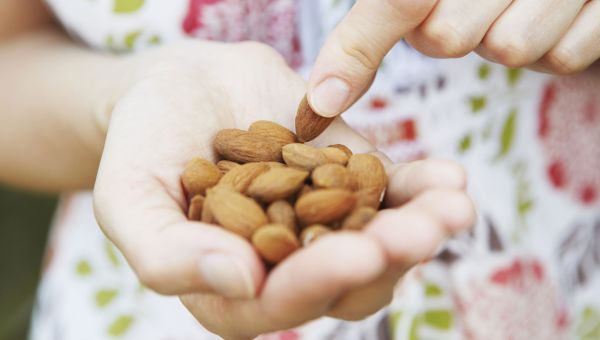
Follow these Paleo-friendly tips for success
Eating the Paleo way requires a balance: 3 to 9 ounces of protein, one-half to one pound of veggies, and a drizzle of your favorite fat in every meal. Depending on your specific calorie goals, your serving of fat will vary.
If you’re eating on-the-go, Crandall suggests Paleo-friendly snacks like… Show More
Eating the Paleo way requires a balance: 3 to 9 ounces of protein, one-half to one pound of veggies, and a drizzle of your favorite fat in every meal. Depending on your specific calorie goals, your serving of fat will vary.
If you’re eating on-the-go, Crandall suggests Paleo-friendly snacks like low-sodium turkey jerky and a piece of fruit or a mix of nuts, seeds, and fresh berries.
Other tips for successful Paleo-based eating include:
- Weekly meal prep to avoid missteps and to make eating easy
- Frequent trips to the grocery store for fresh produce and protein
- Supplementing what your diet isn’t giving you
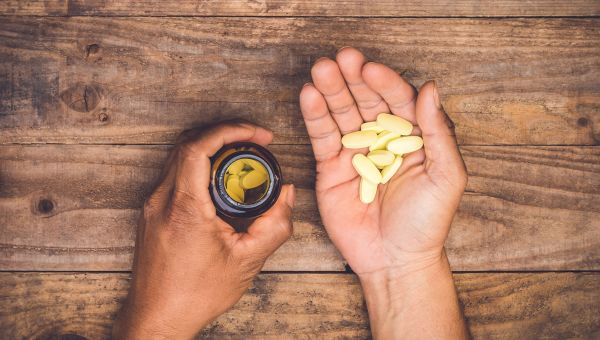
Make sure you get everything your body needs
According to Crandall, following a restrictive or elimination diet will typically result in weight loss. But healthy eating plans should be sustainable—something a person can stay on for the long-term. Since Paleo-friendly foods are severely limited, the diet can be difficult to stick to over time.… Show More
According to Crandall, following a restrictive or elimination diet will typically result in weight loss. But healthy eating plans should be sustainable—something a person can stay on for the long-term. Since Paleo-friendly foods are severely limited, the diet can be difficult to stick to over time.
The exclusion of entire food groups is also a potential issue. A healthy diet should include many different foods to provide the variety of nutrients our bodies need to function. When these foods are prohibited, it can lead to nutritional deficiencies.
If you don’t eat calcium-rich dairy products and fiber-filled whole grains, for example, you run the risk missing out on essential vitamins and nutrients like calcium, vitamin D, and fiber. Too little calcium and vitamin D could eventually lead to weak and brittle bones. Lack of fiber could contribute to elevated cholesterol and blood sugar levels and constipation.
If you’re going Paleo, follow these daily nutrient recommendations:
- Calcium: Most adults should get about 1,000 to 1,200 milligrams daily.
- Vitamin D: Most adults should get between 600 and 800 IUs per day.
- Fiber: Most people should eat 14 grams of fiber per 1,000 calories, which translates to about 22 to 28 grams of fiber per day for women and 28 to 34 grams per day for men.
How can you still be healthy while following Paleo? Before you start the diet, talk with your healthcare provider or nutritionist about your specific dietary needs. “Meeting with a registered dietitian can be really helpful in assessing whether you’re getting the nutrition that your body needs to thrive,” Crandall says.
Show Less
The Paleo Diet. The Benefits of the Paleo Diet. Accessed May 13, 2025.
Mayo Clinic. Paleo diet: What is it and why is it so popular? June 21, 2024.
The Paleo Diet. Is It Paleo? Accessed May 13, 2025.
The Paleo Diet. Frequently Asked Questions. Accessed May 13, 2025.
The Paleo Diet. Can The Paleo Diet Protect Against Chronic Diseases? Accessed May 13, 2025.
The Paleo Diet. Why The Paleo Diet Doesn’t Focus on Macronutrients. Accessed May 13, 2025.
The Paleo Diet. Eat More Protein for Better Health. Accessed May 13, 2025.
Harvard T.H. Chan School of Public Health. The Nutrition Source. Protein. Accessed May 13, 2025.
American Heart Association. Picking Healthy Proteins. August 28, 2024.
American Heart Association. Saturated Fat. August 23, 2024.
Columbia University Irving Medical Center. Do grilled foods cause cancer? June 3, 2024.
American Institute for Cancer Research. Limit Consumption of Red and Processed Meat. Accessed May 13, 2025.
The Paleo Diet. Why Dairy Isn't Paleo. June 30, 2014.
Hess JM, Stephensen CB, Kratz M, Bolling BW. Exploring the Links between Diet and Inflammation: Dairy Foods as Case Studies. Adv Nutr. 2021;12(Suppl 1):1S-13S.
The Paleo Diet. Debunking the Biggest Myths About The Paleo Diet. Accessed May 13, 2025.
National Institutes of Health Office of Dietary Supplements. Calcium: Fact Sheet for Health Professionals. July 24, 2024.
The Paleo Diet. Are Potatoes Paleo? Accessed May 13, 2025.
The Paleo Diet. Is Sweet Corn Paleo? Accessed May 13, 2025.
The Paleo Diet. Are Beans and Legumes Paleo? Accessed May 13, 2025.
American Heart Association. The Benefits of Beans and Legumes.October 27, 2023.
The Paleo Diet. How Much Sugar is in Your Fruit? Accessed May 13, 2025.
Mayo Clinic. South Beach Diet. June 9, 2023.
The Paleo Diet. Are Ancient Grains Gluten Free and Healthy? Accessed May 13, 2025.
U.S. Department of Agriculture and U.S. Department of Health and Human Services. Dietary Guidelines for Americans, 2020-2025. 9th Edition. December 2020.
Harvard T.H. Chan School of Public Health. The Nutrition Source. Whole Grains. Page accessed September 22, 2022.
The Paleo Diet. Are Whole Grains Healthy? Accessed May 13, 2025.
The Paleo Diet. Are Peanuts Paleo? Accessed May 13, 2025.
Mayo Clinic. Nuts and your heart: Eating nuts for heart health. November 15, 2023.
The Paleo Diet. Eating the Right Fat. Accessed May 13, 2025.
Paleo Plan. Basics of Meal Construction. Page accessed September 22, 2022.
Harvard T.H. Chan School of Public Health. The Nutrition Source. Types of Fat. Accessed May 13, 2025.
National Institutes of Health Office of Dietary Supplements. Vitamin D: Fact Sheet for Health Professionals. July 26, 2024.
More On


video

article
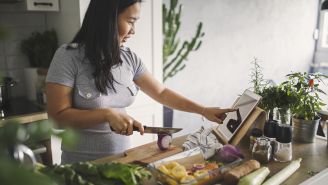
slideshow


video


video
